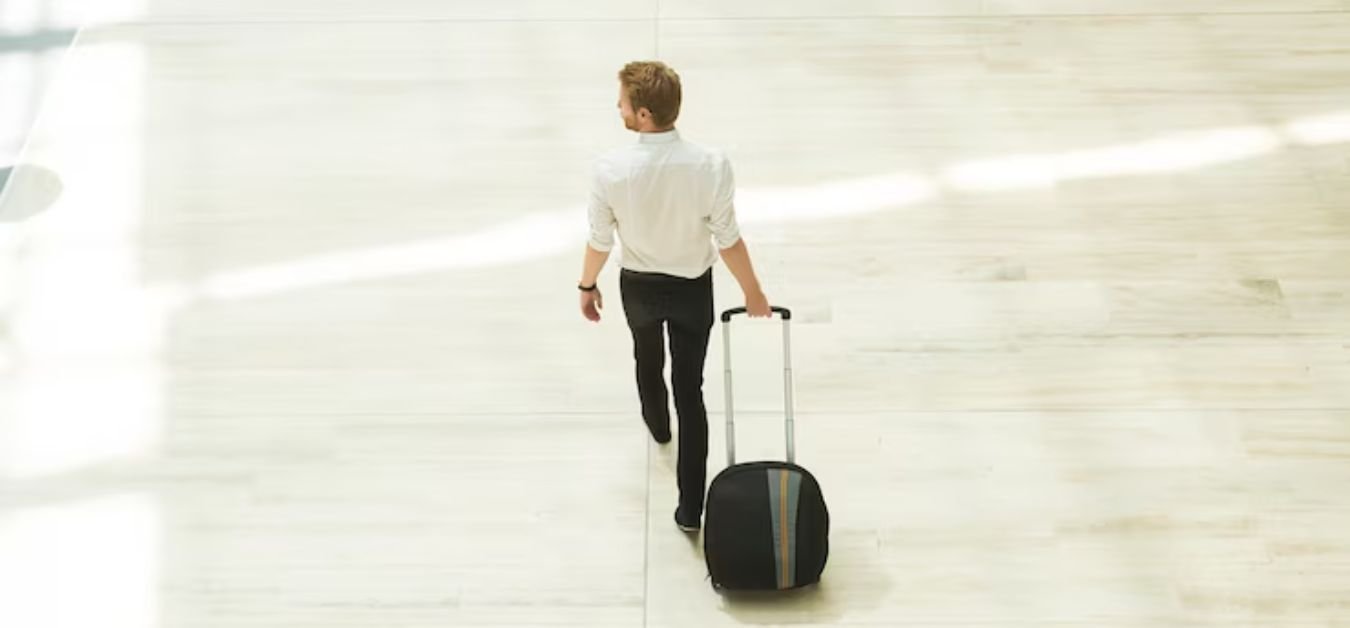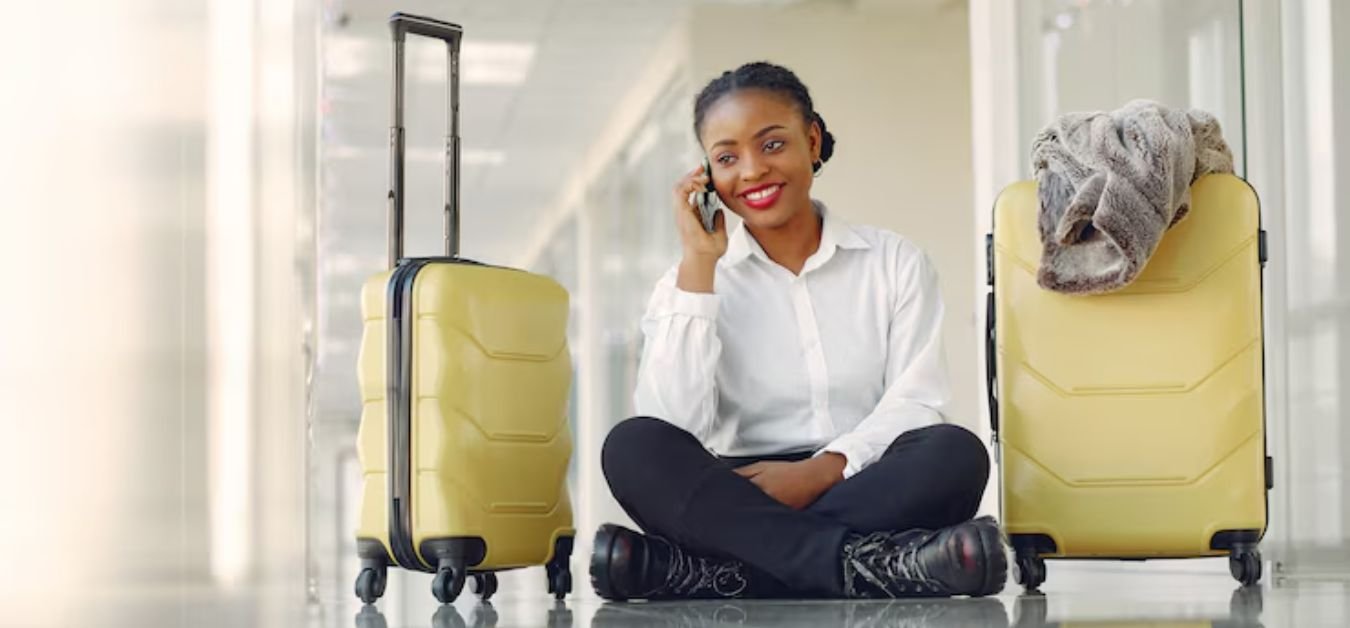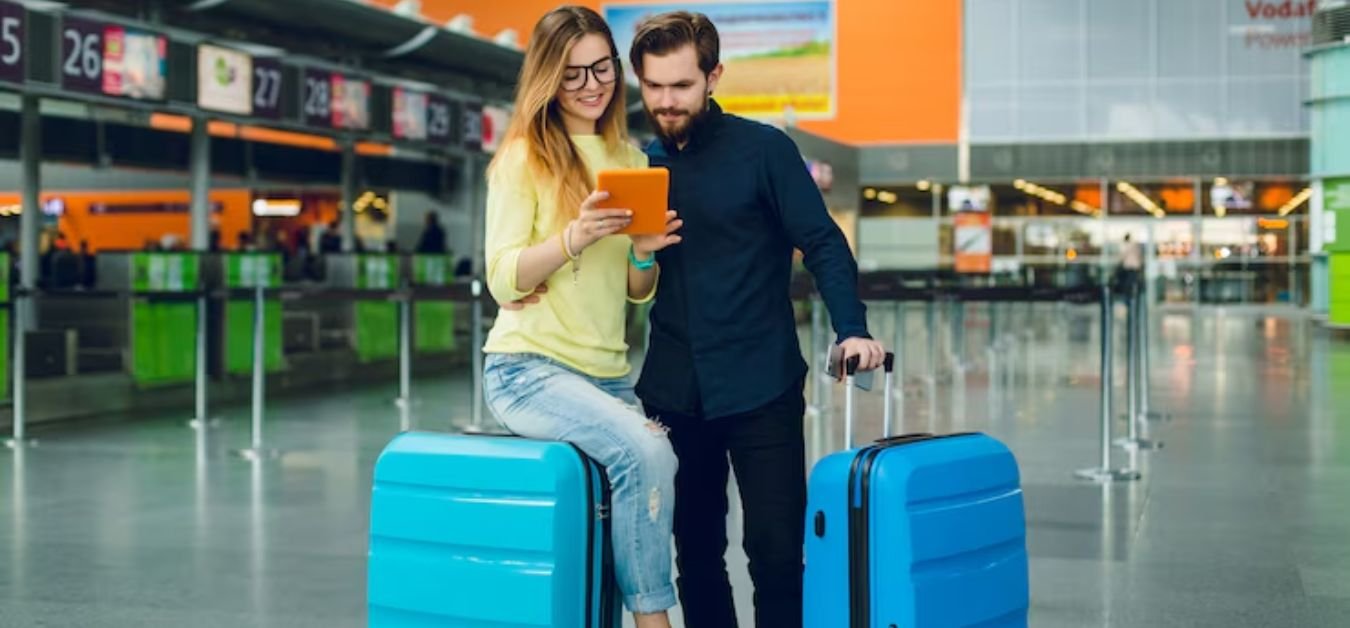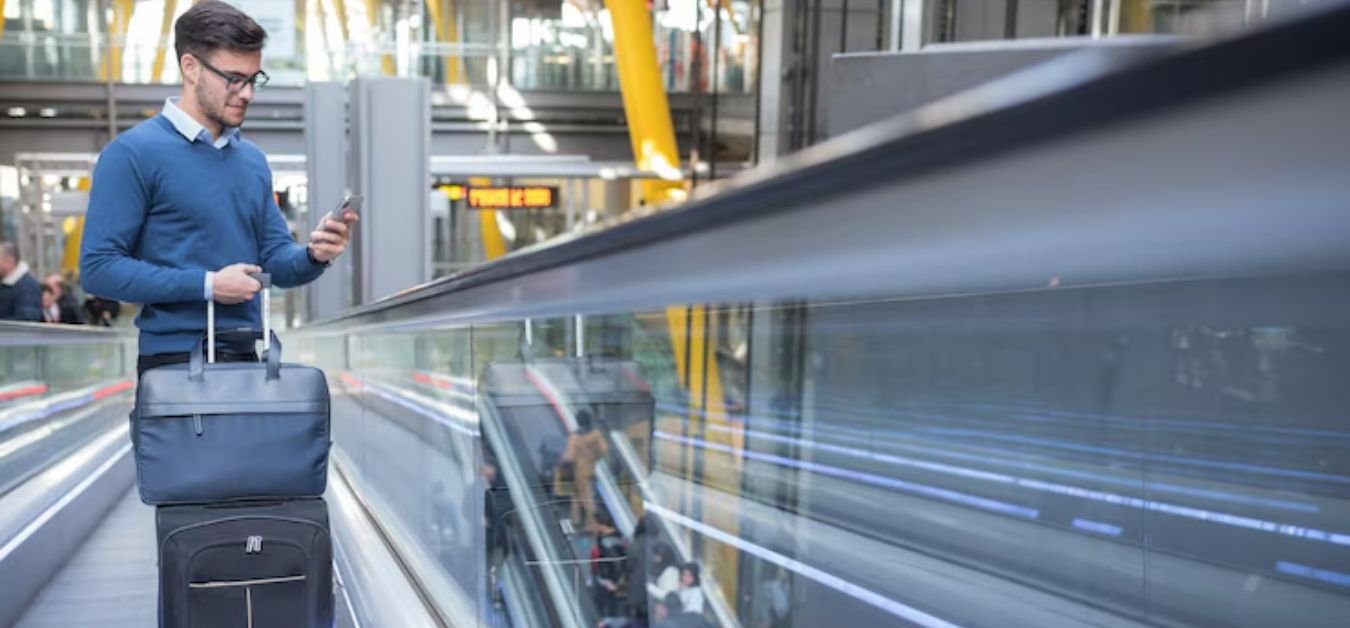Understanding the Korean Air Baggage Policy is essential for travelers aiming to ensure a smooth airport experience. Whether you’re flying internationally or domestically, Korean Air has clearly defined carry-on and checked baggage regulations that vary by booking class and route.
The policy not only outlines weight and size limits but also provides guidance on what can be brought into the cabin, how to store items properly, and what safety restrictions apply. Following these rules helps maintain in-flight safety, improves passenger comfort, and ensures compliance with aviation standards across all destinations Korean Air serves. So, here is a glimpse at Korean Air’s baggage policy.
Korean Air’s Carry-On Baggage Allowance
Korean Air allows passengers to bring one standard carry-on item plus one personal item onboard, with specific rules depending on the class of service. These regulations apply to both domestic and international routes.
Allowance by Class
Korean Air sets different carry-on weight limits based on your cabin class. Understanding these limits helps avoid unexpected gate checks or additional fees.
Economy Class:
- The total weight of carry-on and personal items must not exceed 10 kg.
First/Prestige Class:
- Allowed to carry two items (one carry-on + one personal item).
- Total combined weight must stay within 18 kg.
Size Restrictions
To ensure your luggage fits in designated cabin spaces, Korean Air has outlined specific size dimensions for both standard carry-on bags and personal items. This is for the Economy Class, as well as the First/Prestige Class.
- Must not exceed 115 cm in total (length + width + height).
- Standard measurements: 55 cm x 40 cm x 20 cm (including wheels and handles).
- Acceptable items: Cabin-sized trolley, backpack, or Boston bag.
Personal Item Dimensions:
- Must fit within 40 cm x 30 cm x 15 cm.
- Acceptable items: Laptop bag, small handbag, or briefcase.
- Must fit under the seat in front of you.
Stowing Your Carry-On Items
Proper storage of carry-on items not only ensures safety onboard but also improves cabin space management. Korean Air encourages passengers to follow these stowage guidelines closely.
- Place large carry-ons in the overhead bin.
- Personal items should be stored under the seat in front, not your own seat.
- Ensure all items are secured to prevent movement during take-off or landing.
Important Considerations Regarding Korean Air’s Carry-on Baggage Policy
Beyond size and weight, several safety and operational policies apply to carry-on baggage. These additional points are crucial for compliance and a hassle-free flight experience.
- Carry-on items may be checked at the gate if overhead space is full or if the baggage appears oversized.
- Carry-on allowance may vary on codeshare flights depending on the operating airline.
- Korean Air prohibits comfort devices that may obstruct aisles or exits (e.g., Bedbox, leg hammock).
- Passengers are responsible for stowing their own baggage to prevent injury or damage.
- Safety restrictions apply to lithium batteries and personal electronic devices:
- Devices under 100Wh: Allowed (max 15 per person).
- Devices between 100Wh–160Wh: Allowed for medical use only (max 1).
- Over 160Wh: Not permitted in carry-on or checked baggage.
- Smart bags and electric wheels that can’t remove the lithium batteries aren’t allowed for transport. Also, flat iron curls or hair curls having non-removable batteries are only allowed on flights from Japan.
- In your carry-on, you can carry a box of matches and a single lighter. These aren’t allowed in your checked bag. Also, the regulations for matches and lighters vary as per the departing country. For instance, flights from China don’t allow matches or lighters in carry-on or checked bags.
Carrying Pets in Cabin
If you plan to travel with a small pet in the cabin, Korean Air permits it under certain conditions. Here’s what you need to know to meet the airline’s requirements.
- Pets must be at least 8 weeks old.
- Total weight of the pet + carrier must not exceed 7 kg.
- Maximum carrier dimensions:
- Hard case: 45 cm x 32 cm x 19 cm
- Soft case (max height): 25 cm
- Carriers must fit under the seat in front of you, be leak-resistant, well-ventilated, and allow the pet to move comfortably.
Checked Baggage: Korean Air Baggage Policy Guidelines
As part of the comprehensive Korean Air Baggage Policy, passengers are offered a clearly defined free checked baggage allowance. These allowances depend on the route, travel class, and type of fare. Korean Air follows both weight and piece concepts depending on the region, with exceptions for travel to/from specific countries like Brazil and the Americas.
Domestic Routes – Free Baggage Allowance
Traveling within Korea? Here’s what you can check in without paying extra:
- Economy Class: Up to 20 kg
- Prestige Class: Up to 30 kg
Note: For domestic flights, the baggage weight is calculated, not by the number of pieces, but by total allowable weight.
International Flights (Except the Americas & Brazil)
For most international flights, the piece system applies, but limits depend on your booking class.
- Economy Class (Saver):
- 1 piece, 23 kg or less
- Economy Class (Other fares):
- 1 piece, 23 kg or less
- Prestige Class:
- 2 pieces, up to 32 kg each
- First Class:
- 3 pieces, up to 32 kg each
Note: Each piece must not exceed 158 cm (62 in) in total linear dimensions, including handles and wheels.
Flights to/from the Americas (Excl. Brazil)
If you’re flying between Korea and North/South America (excluding Brazil), allowances vary slightly:
- Economy Class (Saver):
- 1 piece, 23 kg or less
- Economy Class (Other fares):
- 2 pieces, 23 kg or less each
- Prestige Class:
- 2 pieces, 32 kg or less each
- First Class:
- 3 pieces, 32 kg or less each
Flights to/from Brazil
For tickets issued Before June 29, 2025
- All Economy Fares:
- 2 pieces, 32 kg each
- Prestige Class:
- 2 pieces, 32 kg each
- First Class:
- 3 pieces, 32 kg each
Tickets Issued On or After June 30, 2025
- Economy Class (Saver):
- 1 piece, 23 kg or less
- Economy Class (Other fares):
- 2 pieces, 23 kg or less each
- Prestige Class:
- 2 pieces, 32 kg or less each
- First Class:
- 3 pieces, 32 kg or less each
Korean Air’s Checked Baggage Policy for Infants and Children
The Korean Air Baggage Policy offers additional flexibility when traveling with young passengers.
- Infants (under 2 years):
- Domestic flights:
- 1 foldable stroller + 1 car seat or bassinet
- International flights:
- 1 bag (up to 10 kg / 22 lbs, size within 115 cm)
- 1 foldable stroller
- 1 car seat or bassinet
- Domestic flights:
- Children (2 years and above):
- Same allowance as adult passengers, plus:
- 1 foldable stroller
- 1 car seat or bassinet
- Same allowance as adult passengers, plus:
Important Notes and Safety Reminders for Checked Baggage on Korean Airlines
Korean Air provides essential reminders for a safe and compliant baggage experience:
- Baggage over 32 kg or exceeding 158 cm in size may be restricted in some countries, even with excess fee payments.
- If you are flying a codeshare route, the operating airline’s baggage policy may apply instead.
- Do not transport items for strangers—you are legally responsible for all bags under your name.
- You cannot combine baggage allowances with others in your party.
- Always verify your baggage tag at the carousel to avoid loss or confusion.
Korean Air’s Excess Baggage Policy
When your checked baggage exceeds the number, size, or weight permitted by your fare class, excess baggage fees apply. The Korean Air Baggage Policy outlines a straightforward process for determining these charges, offering both online tools and airport-based payment options. Passengers are encouraged to calculate their expected fees in advance using the airline’s official Baggage Calculator.
How to Calculate Excess Baggage Fees
Korean Air provides a digital Baggage Calculator tool on its website, which allows passengers to estimate fees based on their itinerary and ticket details.
To use the calculator, you’ll need:
- Departure and destination airports
- Date of travel
- Ticket fare type and class
- Number of checked bags
- SKYPASS membership level
- Ticket purchase date
Note: The calculator applies only to Korean Air-operated international flights. Codeshare and interline flights follow the partner airline’s baggage policies.
For segments to or from the Americas, the first bag is free of charge for Economy Saver. From the second bag, each item is charged KRW 200,000.
The overweight baggage fee is KRW 100,000 for bags weighing between 24 and 32 kg. For bags between 32 and 45 kg, the charge is KRW 200,000. For oversized baggage from 159-203 cm, a charge of KRW 200,000 is incurred.
Baggages between 203 and 292 cm are charged KRW 400,000. The charges are the same for Economy (excluding Saver), First Class, and Prestige Class. For more details on excess baggage on other routes, you may contact Korean Air’s customer service or visit their official website.
What Triggers Excess Fees On Korean Air Flights?
According to the Korean Air Baggage Policy, additional fees apply in the following situations:
- Exceeding the number of free checked bags
- Overweight baggage (i.e., more than 23 kg in Economy or 32 kg in premium cabins)
- Oversized baggage (i.e., total linear dimension exceeding 158 cm / 62 in)
Each criterion (number, weight, size) incurs a separate fee, and these charges apply per bag.
General Guidelines to Remember
- The maximum weight allowed per piece is 32 kg (70 lbs), even with excess fees paid.
- Some countries restrict the acceptance of oversized or overweight bags regardless of payment.
- On codeshare flights, baggage regulations are governed by the operating carrier, not Korean Air.
- Baggage allowances cannot be combined between passengers traveling together.
- For itineraries with more than four checked bags or multi-city routes, contact Korean Air directly to confirm limitations based on aircraft capacity.
Refunds for Delayed Excess Baggage
Passengers flying to or from the Americas may be eligible for a refund of excess baggage fees under specific conditions. According to U.S. Department of Transportation (DOT) guidelines:
- If a bag is delayed 15+ hours on a flight under 12 hours, or
- 30+ hours on a flight over 12 hours,
- And the passenger paid an excess baggage fee,
- A refund may be claimed.
Note: Refund eligibility applies only for flights touching U.S. soil and where delays meet DOT’s threshold.
Can You Carry Musical Instruments On a Korean Air Flight?
Yes, musical instruments are permissible, but they have a series of rules and regulations. Instruments having a linear height of 115 cm or 45 inches or less, such as violins, can be carried for free. Store them in the bin overhead or the space below your seat. However, instruments exceeding 115 cm in dimensions, like double basses, geomungo, or cellos, cannot be carried for free. You should book a seat, for which you must contact the Service Center.
You can carry the musical instruments in your checked baggage as well, but they should be packed well in a hard case. You should also have to fill out the Limitation of Liability at the check-in counter. If the dimension exceeds 32 kg or 203 cm or both, you should purchase a separate seat for your musical instrument. You may even consider transporting through a freight forwarder.
What is the Rule for Carrying Sports Equipment On Korean Air Flights?
The maximum weight and combined linear dimensions for transporting sports equipment are 32 kg/70 lbs or less than that, and 292 cm or 115 inches or less than that. You should pack sports equipment properly in a hard case to avoid it from getting damaged.
Golf clubs must be packed in hard cases, as no compensation will be given if they aren’t packed well. There are waiver rules on international Korean Air flights only. For instance, in Economy Class, one bag and one golf bag are allowed. The same goes for First Class and Prestige Class. For Economy Class, if the weight surpasses 23 kg, but isn’t more than 32 kg, it is considered as a single checked bag, but overweight charges apply. If the weight is over 32 kg, then it is regarded as two checked bags. For the First or Prestige class, if the weight is within 32 kg, then it is a single checked bag. If the weight surpasses 32 kg then it is two checked bags.
Ski or snowboarding equipment is permitted, and the charges per bag are incurred. If it is within 292 cm, then there are no oversized fees. For international flights, the waiver rules apply. In the Economy Class, one ski or snowboard bag weighing 23 kg or less is considered a single checked bag. If the weight exceeds 23 kg but is not greater than 32 kg then it is a single checked bag, but overweight fees will be charged. If the weight is over 32 kgs, then it is considered two checked bags. For the First or Prestige class, a ski or snowboard bag and one bag is a single checked bag if it weighs 32 kg or less. When it weighs more than 32 kgs, then it is considered two checked bags.
Scuba diving equipment has to be packed properly as well. The air tank has to be empty and checked in at the counter. Oversize fees don’t apply if the bag is within 292 cm or 115 inches. Waver rules apply for international flights.
Bicycles have to be packed in a hard case as the handles, frames, and wheels may bend. You must also fix the handles and remove the pedals before packing. Motorized vehicles having engines, such as scooters, motorcycles, jet skis, and bicycles, aren’t permitted as checked baggage since there’s a risk of explosion or fire. One bicycle is considered a single checked baggage item. If the total dimension is within 292 cm, no oversized fees apply.
Other sports items allowed but subject to rules and regulations include fishing equipment, hockey equipment, and skateboards. You may contact Korean Air’s official website for more details on sporting equipment.
If traveling with a firearm and ammunition, declaring them during check-in and filling out the declaration form is a mandate. You can transport the item as checked baggage after you unload the firearm. Ammunition is permitted for sporting only and must be separately packed in a container. Each person is allowed no more than 5 kg of ammunition.
Restricted and Prohibited Items on Korean Air
Safety is a top priority in the Korean Air Baggage Policy, and the airline strictly enforces international guidelines on restricted and prohibited items. These rules apply to both carry-on and checked baggage and are in line with IATA Dangerous Goods Regulations. Some items are completely banned, while others are conditionally permitted under specific guidelines.
Items Completely Prohibited in Carry-On and Checked Baggage by Korean Air
The following materials are strictly banned from all Korean Air flights due to safety concerns:
- Combustible and flammable substances:
- Gasoline, lighter fluid, paint, etc.
- Pressurized gas containers:
- Butane cartridges and other gas canisters
- Weapons and explosives:
- Firearms, ammunition, fireworks, and similar items
- Hazardous household products:
- Fire extinguishers, bleach, insecticides, aerosol sprays (industrial use)
Note: These items cannot be carried in any form—neither in cabin baggage nor as checked luggage.
Items Allowed By Korean Air in Limited Quantities
Some items may be brought onboard in controlled amounts, depending on their type and intended use:
- Liquids & gels (international flights):
- Containers must be 100 ml or less, placed in a 1-liter sealed transparent bag (per person)
- Medications:
- Must be accompanied by a doctor’s note or prescription
- Dry ice:
- Up to 2.5 kg per person, permitted with proper ventilation
- Powder-like substances (US & Australia flights):
- Maximum of 350 ml (12 oz) per person
Note: Always check the regulations of the departure country, as local rules may be more stringent.
Lithium Battery Rules: Spare and Installed Devices
Korean Air imposes detailed guidelines for lithium battery-powered devices and spares, which differ by capacity:
- Carry-On Only (Not Allowed in Checked Bags):
- Spare lithium-ion batteries:
- ≤ 100 Wh: Up to 5 batteries
- 101–160 Wh: Up to 2 batteries (with airline approval)
- 160 Wh: Not allowed
- Spare lithium-ion batteries:
- Battery safety:
- Must be individually insulated or placed in plastic bags
- Cannot be stored in overhead bins
- Up to 20 batteries for medical devices (with prior permission)
- Installed in Devices (e.g., laptops, vapes, cameras):
- Devices ≤ 100 Wh:
- Up to 15 devices per person
- Devices 101–160 Wh:
- 1 device per person with airline approval
- Smart luggage:
- The battery must be removable and carried separately
- Cannot be charged or used in-flight
- Devices ≤ 100 Wh:
Note: Devices with battery recall warnings, like certain MacBook Pro models (15-inch, 2015), may be restricted or banned unless repaired.
Items Restricted from Checked Baggage
The Korean Air Baggage Policy prohibits several high-value or fragile items from being checked in:
- Valuables:
- Cash, jewelry, important documents, electronics, securities
- Fragile or perishable items:
- Ceramics, glassware, and food items are prone to spoilage
- Loose/spare batteries:
- Must always be carried in cabin luggage
- Lighters and vapes:
- Limited to 1 per person, must be carried on your person
- Plasma lighters and torch-style lighters are not allowed
- Charging vapes onboard is strictly prohibited
Special Devices & Battery-Operated Mobility Aids
Passengers traveling with electric wheelchairs or assistive devices must follow Korean Air’s battery safety regulations:
- Removable lithium batteries:
- ≤ 300 Wh for mobility devices
- Up to 2 spares allowed, each ≤ 160 Wh
- Non-removable batteries:
- Must be securely attached and short-circuit protected
- Wet-cell batteries:
- Permitted only with a verified spill-proof design
Note: Contact the Korean Air Service center in advance to confirm if your electric wheelchair is allowable on board. A lot of it depends on the battery type, the wheelchair’s size, and also the handling procedure.
Final Safety Notes
- Airport security has full authority to ban items deemed unsafe, even if not listed.
- Baggage items should never be accepted from strangers.
- Always check destination-specific restrictions—some countries may enforce stricter baggage rules.
Korean Air Delayed, Lost, or Damaged Baggage Policy
Despite every precaution, baggage delays or damage can occasionally occur due to system malfunctions, weather disruptions, or handling issues. As outlined in the Korean Air Baggage Policy, the airline is committed to resolving such matters efficiently while maintaining transparency and providing compensation where applicable.
Baggage Delay: What to Do
If your baggage does not arrive at your destination, immediate action is essential. Korean Air offers assistance through a Property Irregularity Report (PIR) for delayed baggage.
Steps to Follow:
- Report the delay immediately to Korean Air staff upon arrival.
- File a delay report using your baggage tag—essential for identification.
- The report must be submitted within 21 days of the delay.
- Use the airline’s platform to track your delayed bag status online.
- You may be eligible for one-time emergency expense support of approximately. USD 50 (unless arriving at your home city).
Note: When flying multiple segments, always report to the airline operating your final flight segment for smoother tracking.
U.S. DOT Rule on Excess Baggage Refunds
For flights to/from the U.S., you can claim a refund on paid excess baggage fees if:
- The delay exceeds 15 hours (flight duration under 12 hours), or
- Exceeds 30 hours (flight duration over 12 hours)
Damaged Baggage: Filing and Claims
In the event of baggage damage, Korean Air advises passengers to report it within 7 days of receiving the affected item.
How to Report:
- Visit a Korean Air desk or contact customer service with your bag tag number.
- Describe the damage and retain photos or evidence for processing.
Compensation Policy:
- Subject to airline discretion and excludes minor wear.
- Compensation may be declined in some cases due to operational limits or handling protocols.
Not Covered by Korean Air:
- Minor scratches, dents, scuffs, stains
- Damage to locks, tags, straps, or covers
- Sports equipment like golf clubs not packed in rigid/hard cases
- Damage resulting from security inspections, such as by TSA (U.S.)
Note: If your baggage is damaged by the U.S. TSA random screening, contact them directly at 1-866-289-9673.
Also Read: Eswatini Air Baggage Policy
Lost Items
Losing a personal item while traveling can be stressful, but Korean Air offers a systematic approach for recovery. According to the Korean Air Baggage Policy, lost items found at Korean Air-operated locations—such as check-in counters, lounges, or aircraft cabins—are handled directly by the airline’s Lost and Found Office.
Where to Inquire
If you believe you’ve left something behind, you should:
- Contact the Korean Air Lost and Found Office directly.
- Lost items are accepted only if found at Korean Air facilities, like the lounges or check-in counters, or onboard.
- Reach out as soon as possible, as items are held for a limited time.
Retention Period and Disposal Policy
- Held for 30 days: Items not claimed within this period are handed over to local government authorities or safely destroyed.
- Perishables and neck pillows: These are immediately discarded for hygiene and storage reasons.
Conclusion
The Korean Air Baggage Policy is designed to offer passengers clarity, convenience, and compliance with international safety standards. From precise carry-on and checked baggage allowances to detailed rules on excess baggage, restricted items, and claims for delays or damage, the airline provides transparent guidelines to ensure a smooth travel experience.
Korean Air also offers timely support through its Lost and Found and baggage tracking services. By adhering to these policies and reviewing specific conditions for your route, passengers can prepare confidently, reduce unexpected costs, and enjoy a seamless journey with one of Asia’s leading airlines.
Frequently Asked Questions
No, Korean Air does not permit pooling or combining baggage allowances between passengers, even when traveling on the same reservation. Each traveler must adhere to their baggage limits based on fare type and cabin class.
Even if your carry-on meets the size and weight requirements, Korean Air may check it at the gate if overhead bins are full. This ensures safety and comfort in the cabin. It’s advisable to keep valuables and essentials in a smaller personal item.
Yes, under U.S. DOT regulations, if your excess baggage fee is paid for a flight to/from the U.S. and your bag is delayed beyond 15 or 30 hours, depending on flight length, you may be entitled to a refund of the fee. This must be claimed through Korean Air after the delay is verified.
Korean Air holds lost personal belongings for up to 30 days if found onboard, at lounges, or check-in counters. After that, items are turned over to national authorities or discarded, especially in the case of perishables and travel pillows, which are disposed of immediately.
Yes, but Korean Air has strict guidelines. The lithium battery must be removable and not exceed 300Wh. If the battery is non-removable, it must be properly secured and insulated. Always notify the airline in advance to ensure safe and approved transport.
No, if damage is caused during random inspections by airport security authorities (like TSA), Korean Air is not liable. In such cases, passengers should directly contact the relevant agency, especially if there’s evidence of tampering or written notices inside the bag.




